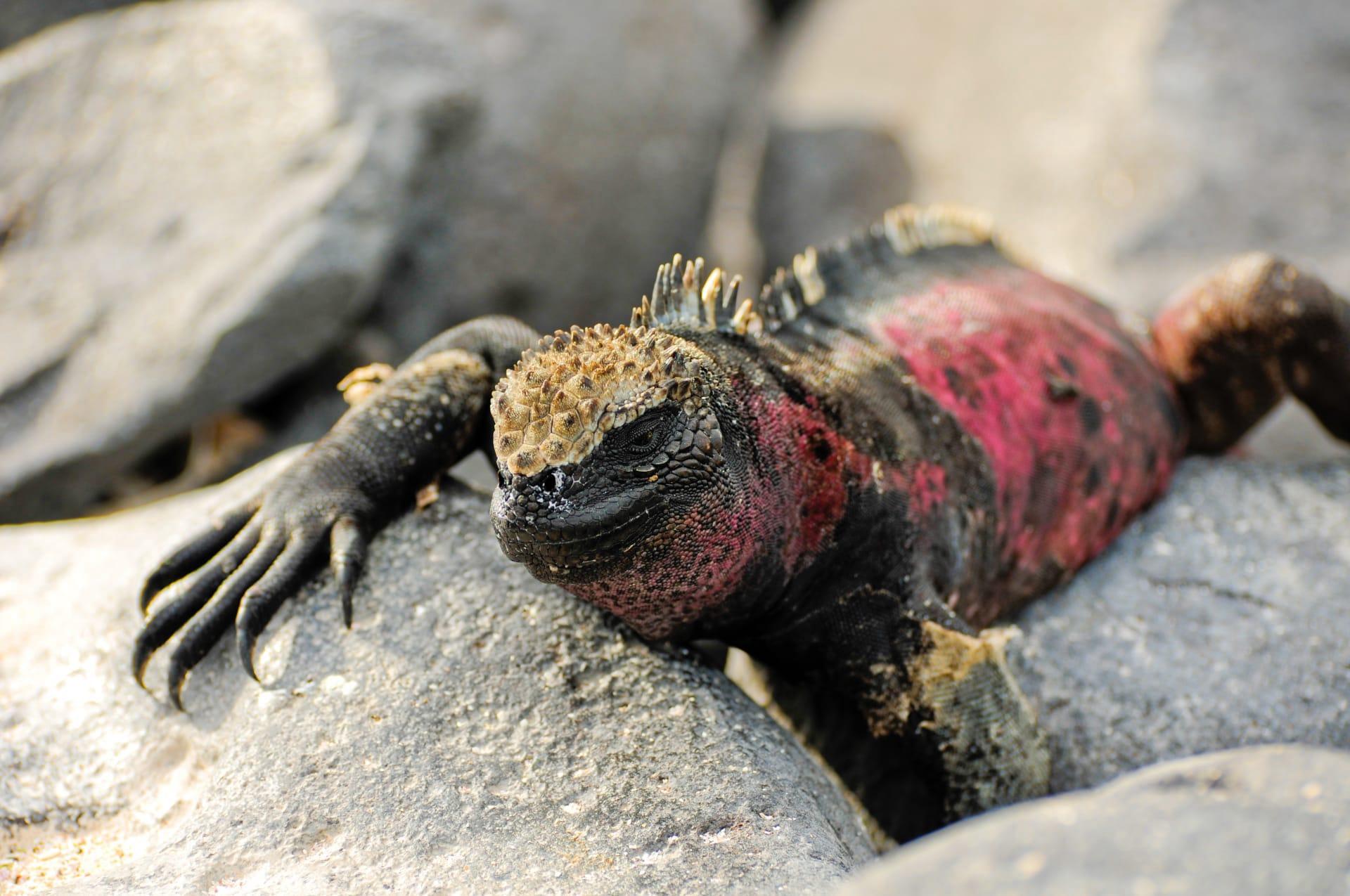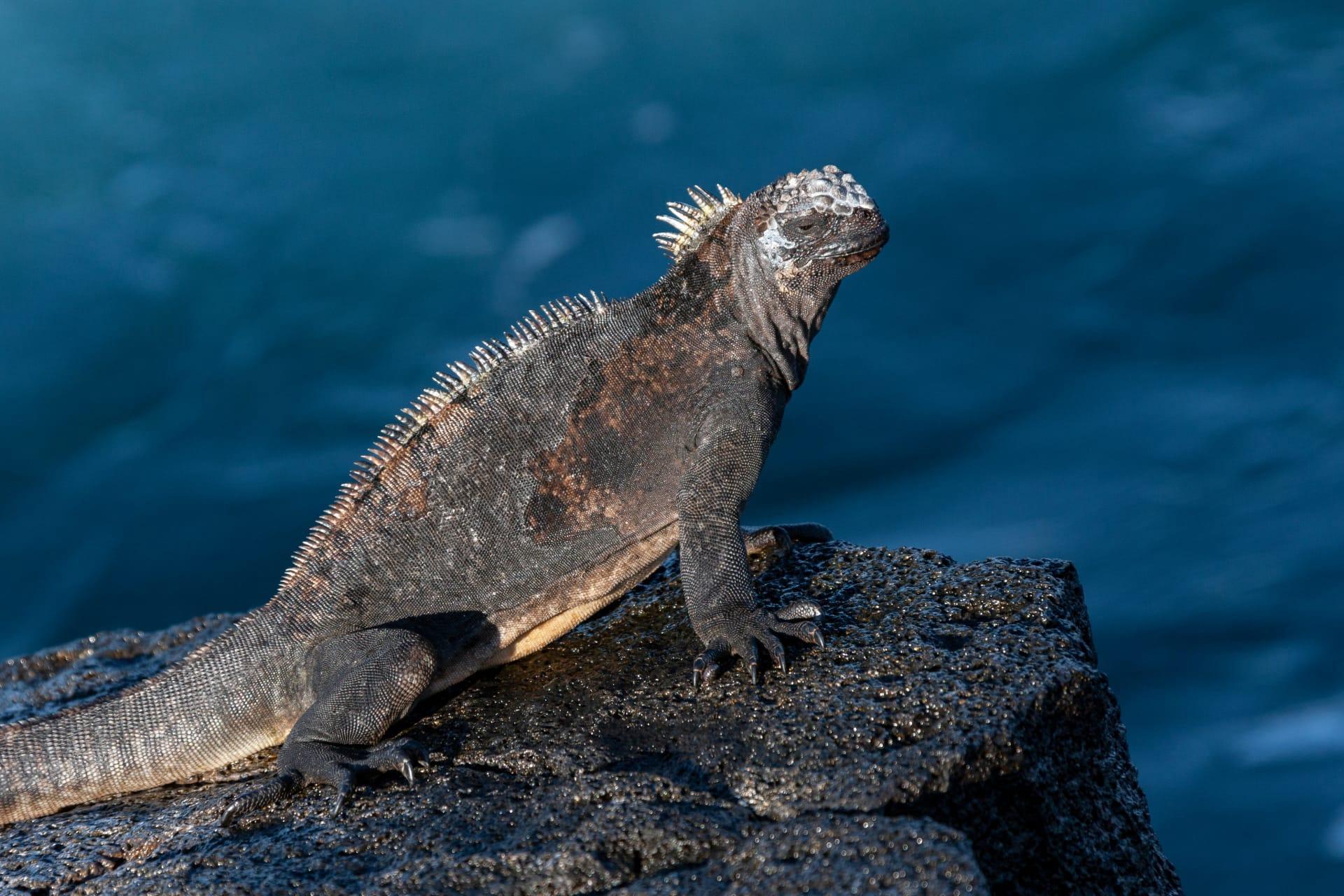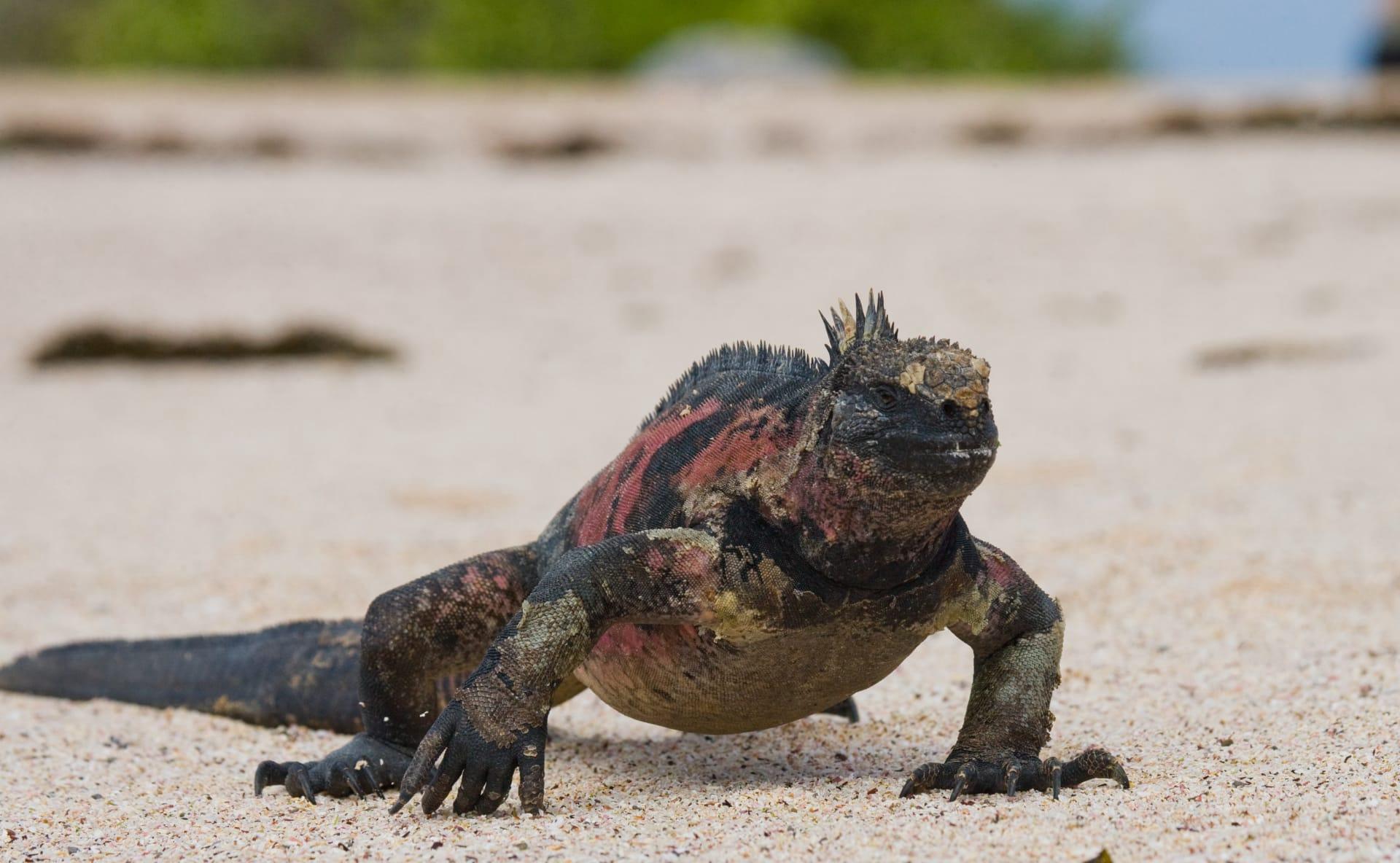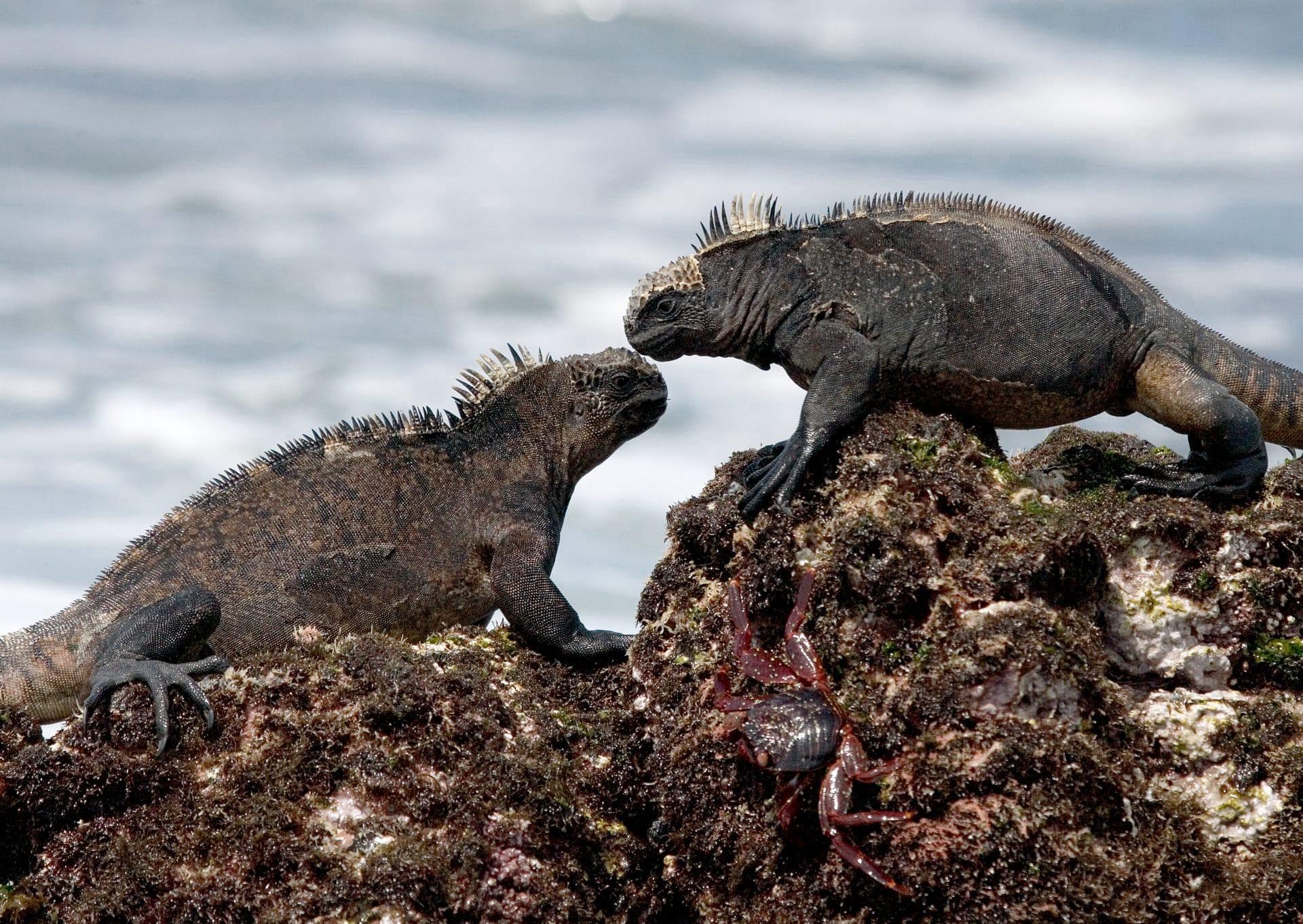1
Did you know that the Galapagos Iguana is a remarkable example of evolution in action? These lizards have developed a unique ability to swim and forage in the ocean. This is quite unusual for large land lizards as most tend to stick to terrestrial environments. Their aquatic adaptations include flattened tails that aid in swimming, similar to how a crocodile's tail works. They can dive over 30 feet deep and hold their breath underwater for up to 30 minutes! This adaptation allows them to feed on algae and seaweeds, which form a significant part of their diet.
Another fascinating aspect of the Galapagos Iguana is their salt excretion process. They have special glands that filter out salt from their bloodstream, a necessary adaptation for animals that consume a lot of saltwater. These iguanas can often be seen sneezing out excess salt, which can accumulate as a white crust on their heads. It's an efficient and quite unique biological system to handle the high-salt environment they often find themselves in.

2
Did you know that the Galapagos Iguana displays a stunning variety of colors? These iguanas can range from a deep black, helping them absorb heat from the sun after a cold swim, to a bright red and green during the mating season. This change is especially notable in the males, who display these vibrant colors to attract females. The intensity of their color can also be a sign of their health and vigor, playing a crucial role in their mating rituals.
Another intriguing fact about the Galapagos Iguana is their social behavior. Unlike many reptiles that tend to be solitary, these iguanas often bask in groups. They have been observed engaging in social behaviors like greeting rituals and even forming hierarchies within their groups. This is quite unusual in the reptile world, where many species tend to be loners. Their social structures help them in thermoregulation and protection against predators.

3
Remarkably, the Galapagos Iguana has a specific adaptation for island life – they can shrink in size! Research has shown that these iguanas can undergo a reduction in body length by as much as 20% in times of scarce food resources. This is an extraordinary adaptation, as vertebrates typically grow throughout their lives and do not decrease in size. This shrinkage is reversible, and they can regain their size when food becomes abundant again. It's a remarkable survival strategy in the ever-changing environment of the Galapagos Islands.
The lifespan of the Galapagos Iguana is another point of interest. In the wild, they can live up to 60 years, which is quite long for a reptile. Their longevity is attributed to their slow metabolism and the relatively predator-free environment of the Galapagos Islands. These factors contribute to their ability to live longer lives compared to many other lizard species.

4
The Galapagos Iguana exhibits a unique feeding strategy – they are the only iguanas that have evolved to be primarily herbivorous. While most iguanas are omnivores, the Galapagos Iguanas feed almost exclusively on plants, particularly algae and seaweed found in the ocean. This diet has shaped their digestive system to be more efficient in processing high-fiber plant material, a rare adaptation among lizards.
Also, these iguanas have a fascinating thermoregulatory behavior. Due to the fluctuating temperatures of their habitat, they have developed the ability to regulate their body temperature by alternating between sunbathing on the rocks and cooling off in the water. This behavior is crucial for their survival, as it helps them maintain a body temperature that allows for optimal digestion and physical activity.

5
The mating rituals of the Galapagos Iguana are quite elaborate. During the mating season, males become extremely territorial and perform a series of visual displays to attract females and ward off rivals. These displays include head bobbing, body inflation to appear larger, and color changes. Males fiercely defend their territories, and these confrontations, though mostly posturing and display, can sometimes turn into physical battles.
Finally, the Galapagos Iguana's conservation status is a tale of successful preservation efforts. Originally threatened by introduced species and habitat loss, conservation programs have helped in stabilizing their population. However, they are still considered vulnerable due to their limited habitat and the ongoing threats posed by climate change and human activities. The efforts to protect these unique creatures are a vital part of preserving the Galapagos Islands' extraordinary biodiversity.